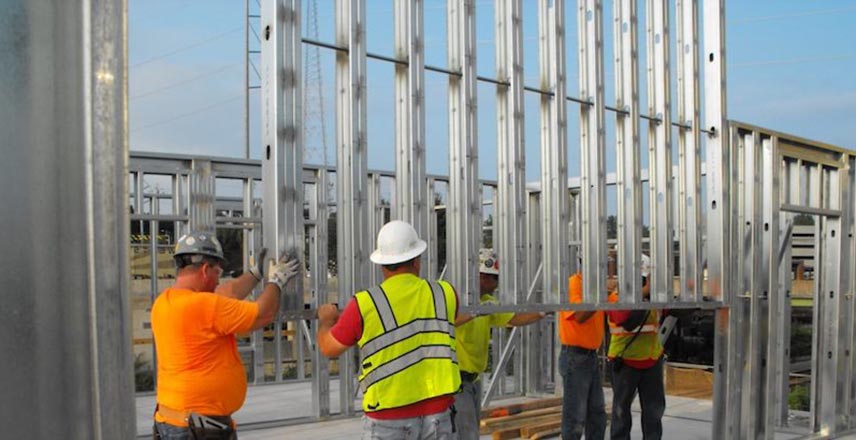Cold-formed steel (CFS) framing is light weight, enormously strong, noncombustible, and easy to install, it has conquered the market for interior, non-loadbearing partition walls in commercial construction. Now, with progressive technological developments like panelized systems, the building community is using CFS for structural applications in low-cost mid-rise and multi-housing buildings.
Cold-formed steel framing is swiftly becoming the material of choice for residences, assisted living facilities, and hotels across the country where far-sighted developers are interested in increasing their return on investment.
What is cold-formed steel?
Cold-formed steel (CFS) members are made from structural quality sheet steel that are formed into C-sections and other shapes by roll forming the steel. No heat is required to form the shapes (unlike hot-rolled steel), hence the name cold-formed steel. A variety of steel thicknesses are available to meet a wide range of structural and non-structural applications.
Value advantage of steel
CFS as a construction material has many advantages. For example, CFS doesn't contract or ripped, won't absorb moisture, and resists twisting, termites, and fire.
As a uniformly manufactured product, the quality of CFS is very consistent. That uniformity translates into less scrap and less waste, while recyclable. In addition to lowering scrap disposal expense, the fire resistance of CFS framing also can help reduce project costs through discounts and other course of construction requirements.
CFS' physical properties allow it to be used in a wide range of environments. It's strength and ductility, for example, make it ideal for construction in regions subject to high winds or earthquakes.
On the jobsite
CFS also offers numerous benefits in terms of the construction process itself. CFS is light making it easy to ship, handle and assemble at the jobsite.
And because CFS is manufactured to exacting standards, it is ideally suited for manufacturing into panels and trusses which, because CFS is light in weight, can be quickly and easily installed with fewer framers on the job.
Common uses of cold-formed steel studs as framing members
- Residential
- Low Cost (Affordable) Accommodations
- Single and Multi-Family Accommodations
- Modular
- Non-loadbearing Walls (Partitions)
- Curtain Walls
- Light Commercial and Institutional spaces
- Mid-Rise Buildings
- Joists and Trusses
- Roof trusses




